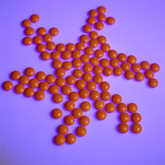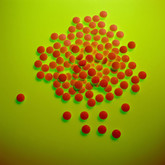Biosimilars
Acceptable changes in quality for glycosylated biologicals
Research carried out by Sandoz into three glycosylated protein biotechnology drugs currently on the market showed quality changes over the period studied. Since all three drugs remained on the market with unchanged labels, this would indicate that the changes were accepted by the health authorities [1].
Opportunities for biosimilar development
Rising drug costs and limited healthcare budgets across the world, coupled with the fact that many biotechnology drugs will soon lose their patent protection, means that there is a huge opportunity for biosimilar manufacturers.
Teva grabs biopharmaceutical company Cephalon
On 2 May 2011, Teva and Cephalon announced that they had unanimously approved a definitive agreement under which Teva will acquire all outstanding shares of Cephalon for US$81.50 per share in cash, or a total enterprise value of approximately US$6.8 billion.
Biobetters rather than biosimilars
‘Biobetters’, rather than biosimilars, are the next big opportunity for biopharm and contract research organisations (CROs) hoping to profit from patent expirations on biologicals, say experts.
Worldwide biosimilar development
The limited access to high-quality biologicals due to the cost of treatment constitutes an unmet medical need in the US and other regions of the world [1].
Generics manufacturers and biosimilars
According to a report by the Wall Street Journal on 31 January 2011, generic manufacturers are expecting biosimilars to be the next cash cow, with sums in the multibillions of dollars expected to be reaped from this market in the near future.
Pharmacodynamic response of biosimilar filgrastim
Research published online on 10 March 2011 on the pharmacodynamic response of recombinant human granulocyte colony-stimulating factor (G-CSF) filgrastim has shown that there is no difference between biosimilar and originator G-CSF.
The history of the US biosimilar regulatory pathway
The US, although it now has a legal pathway (with the approval of the Biologics Price Competition and Innovation Act [BPCI Act], which was signed into law on 23 March 2010 by President Barack Obama), does not yet have a practical pathway with guidance defined by the FDA.
Immunogenicity of biosimilar low molecular weight heparins
In a presentation by Professor JM Walenga and colleagues from the Loyola University Medical Center, Illinois,USA, 'immunogenicity issues faced by biosimilar low molecular weight heparins (LMWHs)' were discussed [1].
Comparison of US and European biosimilar regulatory pathways
The EU and the US have some differences in the way they approach biosimilars. Some of these differences were outlined in an article by Mr David Rosen and Mr Larry Lian published on 2 March 2011.













